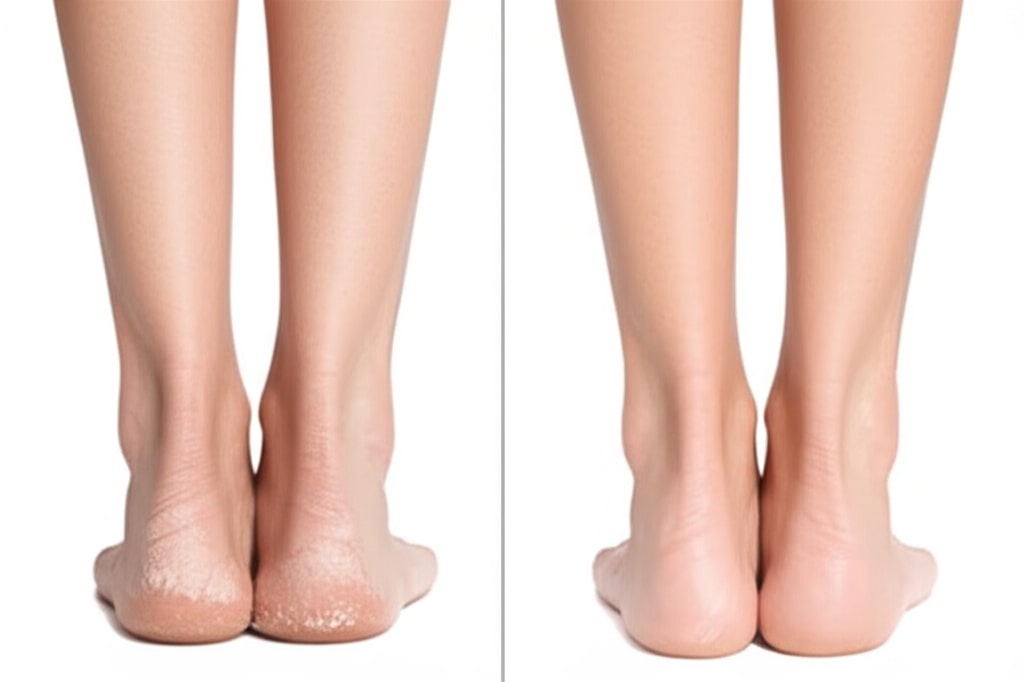The Intriguing Complexity of Cracked Heels
Cracked heels, also termed heel fissures, are a common foot problem. These unsightly, sometimes uncomfortable splits in the skin around the heel can vary from a cosmetic issue to a painful problem, depending on its severity. Often linked with dry skin (xerosis), wearing certain types of shoes, increased weight, and friction from footwear, cracked heels may also indicate more serious health conditions like diabetes or loss of nerve function (autonomic neuropathy).
Pinning Down the Root Cause
Diagnosing cracked heels is a relatively straightforward process. Your foot and ankle specialist will conduct a clinical exam to confirm the condition. In some instances, lab work may be required to establish the source of dry skin. Your medical history could shed light on any systemic health issues contributing to the problem, like diabetes or neuropathy.
Effective, Non-Surgical Solutions
Often the first line of defense against cracked heels involves simple at-home treatments. Regular moisturizing is key – experts recommend applying moisturizer directly to the heels twice a day. Effective ingredients to look for in a moisturizer include alpha hydroxy acids (AHAs), salicylic acids, or urea (10-25 percent). As the callused area thins, switch to creams with ceramides, petroleum, or natural oils to maintain skin softness.
Additionally, a daily ten-minute foot soak in warm (not hot) water can help, coupled with gentle exfoliation using a scrub brush or pumice stone to remove excess dead skin. But if these strategies aren’t working, it’s time to see your foot and ankle specialist. They can rule out any fungal or bacterial involvement, debride callused tissue, and prescribe prescription-strength creams.
The Role of Surgery
The need for surgery for heel fissures is rare if they are treated early. However, if the cracked heel progresses into an open wound, it is then at risk for infection. Surgical debridement may be necessary at that stage.
Why Choose a Foot and Ankle Surgeon?
Foot and ankle surgeons are the leading experts in foot and ankle care. As board-certified surgical specialists, they possess more education and training in foot and ankle health than any other healthcare provider. Their remit extends to treating all conditions affecting this area, from straightforward to complex, in patients of all ages.
Their expertise makes them perfectly placed to provide a range of surgical interventions, including procedures for severe cases of cracked heels in need of surgical debridement or other treatment modalities.
Frequently Asked Questions (FAQs)
- What causes dry cracked heels? Dry skin, wearing certain types of shoes, increased weight, and friction from footwear are the main culprits. Systemic health issues like diabetes or neuropathy can also cause cracked heels.
- How do you heal deep cracked heels? Regular moisturizing, foot soaks, exfoliation, and seeking professional foot care can all help.
- Do cracked heels mean diabetes? Not always, but persistent dry, cracked skin on the feet can be a sign of underlying diabetes or neuropathy.
Final Thoughts
Cracked heels, though a common issue, should not be ignored as they can sometimes be a sign of more serious underlying health issues. Adopting preventive measures and maintaining proper foot hygiene can do wonders in avoiding this issue. However, if you do develop cracked heels, remember that help is readily available from foot and ankle specialists.
In the journey of foot care, education is your most powerful tool. The more you understand about the causes, treatments, and prevention of cracked heels, the better position you’ll be in to take proactive steps toward healthier and happier feet. Don’t let cracked heels hinder your mobility or detract from your quality of life. Take the first step towards better foot health today.




